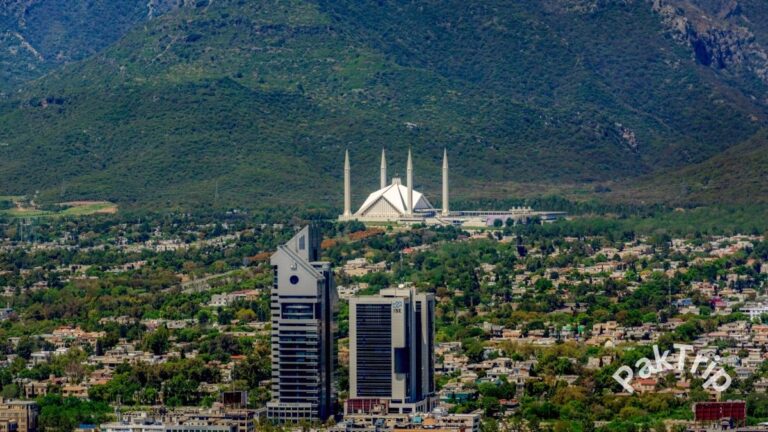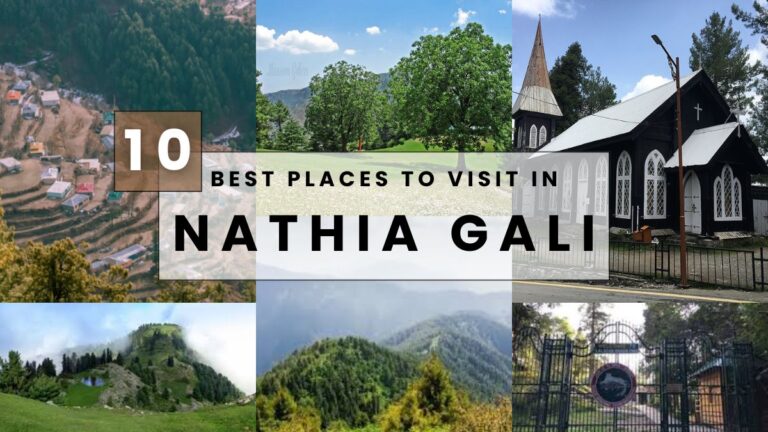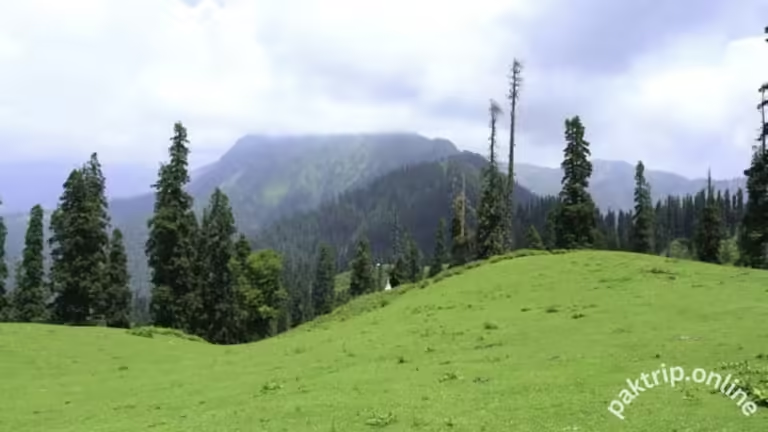Rohtas Fort: A Majestic Heritage of Pakistan’s Past
Rohtas Fort, a grand monument of Pakistan’s architectural heritage, is a timeless reminder of military strength, strategic planning, and the complex history of the South Asian subcontinent. Located near Dina, in the Jhelum district of Punjab, Rohtas Fort covers an impressive 171 acres and remains one of the region’s most significant historical sites. Built in the 16th century by the Afghan king Sher Shah Suri, the fort’s unique features make it a place of great interest for tourists, history enthusiasts, and those seeking to explore Pakistan’s cultural roots.
In this article, let’s delve deep into the fascinating history of Rohtas Fort, explore its magnificent architecture, understand the significance behind its construction, and discover what makes this UNESCO World Heritage Site a must-visit.
A Brief History
The story of Rohtas Fort begins with Sher Shah Suri, an Afghan ruler known for his ambitious military campaigns and effective governance. In the mid-1500s, Sher Shah seized control of the Mughal Empire, driving Emperor Humayun out of India. To fortify his empire and maintain control over the region, Sher Shah constructed several fortresses. Rohtas Fort, constructed between 1541 and 1548, served as a formidable barrier against potential invasions and kept local Gakhar tribes from rebelling, as they were loyal to the Mughals. Positioned strategically along the Grand Trunk Road, Fort was a symbol of strength, enabling Sher Shah to watch over his empire’s northwestern front.
Fort was a well-planned military base and included residential quarters for soldiers, storerooms, a mosque, and impressive gates and walls that created a strong defensive perimeter. Though Sher Shah Suri died in 1545, Fort continued to serve as a military site for successive rulers and eventually came under Mughal control after Humayun regained the throne.
Strategic Location
The fort’s location near the town of Dina on the historic Grand Trunk Road was critical for several reasons. First, it allowed control over a vital trade and travel route stretching from Afghanistan to the Indian subcontinent. Second, the location provided easy access to resources while overlooking the surrounding lands, making it difficult for enemies to launch a surprise attack.
Fort’s elevated position allowed its inhabitants to spot any incoming forces from afar, providing a significant strategic advantage. Its fortified walls, stretching over four kilometers, made the fort a difficult target, and the addition of deep moats added an extra layer of protection.
Architectural Grandeur
Rohtas Fort is an example of a blend of architectural styles, merging Persian, Afghan, and Indian influences into a cohesive, imposing structure.
The fort’s designers meticulously planned and constructed every aspect, resulting in one of the most impressive fortifications of its time. With its 12 gates, massive walls, and various internal structures, the architecture of Fort is one of the most unique and awe-inspiring in South Asia.
The Iconic Gates of Rohtas Fort
Each of Rohtas Fort’s 12 gates is designed with a distinct purpose and style, adding beauty and functionality. The gates served as entry and exit points but also played a crucial role in the fort’s defense strategy. Below are some of the most notable gates:
Sohail Gate
The Sohail Gate is the main entrance to the fort and is easily recognized for its grand arches and massive structure, standing at 70 feet high. This gate served as the primary entrance for visitors and soldiers alike and showcased intricate Islamic calligraphy and floral motifs, adding an aesthetic element to its defensive purpose.
Kabuli Gate
Facing Kabul, this gate signifies Sher Shah Suri’s Afghan roots and was often used for traders and travelers entering the fort from the northwest. The Kabuli Gate is a double-door gate designed with additional security features.
Langar Khani Gate
Known for its robust design, Langar Khani Gate is a double-gated entrance, showing the importance of security in Fort. With decorative elements and strategic fortifications, this gate provided easy access to the soldiers.
Shah Chandwali Gate
Named after a Sufi saint, this gate is said to have been constructed as a tribute. Its design is simpler compared to other gates but holds historical importance.
Khwas Khani Gate
This gate was named after Khwas Khan, a loyal general of Sher Shah Suri. With tall, arched openings and floral motifs, this gate stands as an example of the architectural elegance of the fort.
Each gate is not unique in design but also rich in history, contributing to the Fort’s status as a magnificent piece of architecture and cultural heritage.
A Glimpse of Historical Treasures Inside The Fort
Rohtas Fort is more than its massive walls and gates. It houses several important structures that shed light on the life and culture of the time. Here are some of the notable areas within Fort:
The Shahi Mosque
The Shahi Mosque, or Royal Mosque, is a modest but beautiful structure within the fort’s walls. Built for the soldiers stationed at the fort, the mosque displays Islamic arches and domes, reflecting Sher Shah Suri’s commitment to incorporating religious structures into his fortresses. Though small in size, the Shahi Mosque is an excellent example of Islamic architectural design.
Haveli of Raja Man Singh
One of the most famous parts of Rohtas Fort is the Haveli of Raja Man Singh, a trusted general of Mughal Emperor Akbar. This haveli, or mansion, is situated on a high platform and offers panoramic views of the surrounding landscape. The structure was added to the Fort after the Mughals regained control of the fort, highlighting the complex history and the power shifts. With its spacious layout and scenic surroundings, the haveli offers a glimpse into the lifestyle of the noble class during the Mughal era.
The Massive Defensive Walls
One of the most striking features of the Fort is its outer defensive wall, which spans over four kilometers in l wall, is built with sandstone, lime, and other local materials, is over 12 meters high in some areas, and includes several watchtowers for monitoring. With its thickness and towering height, the wall was designed to withstand attacks, giving the fort its reputation as an impenetrable stronghold.
It’s believed that around 300,000 workers, artisans, and laborers worked tirelessly over seven years to complete this monumental structure. The size, complexity, and durability of the walls reflect the advanced engineering skills of the time.
Restoration Efforts and UNESCO Recognition
Rohtas Fort suffered from natural wear, neglect, and damage as centuries passed. Recognizing the historical importance of the Fort, UNESCO designated it a World Heritage Site in 1997. This status underscored the fort’s architectural and cultural significance, attracting global attention and support for its preservation.
In 2000, the Pakistani government and the Himalayan Wildlife Foundation began a collaborative effort to restore Rohtas Fort. Through restoration projects, they focused on repairing the fort’s gates, walls, and internal structures to preserve it for future generations. These efforts, still ongoing, aim to protect the fort’s historical integrity and ensure it remains a valuable heritage site for Pakistan and the world.
The Cultural Significance
Rohtas Fort is more than a military base it’s a symbol of resilience and unity. The structure exemplifies Pakistan’s rich cultural heritage, embodying the influences of Afghan, Persian, and South Asian cultures. Its Islamic calligraphy and architectural features reflect the religious values of the time, while the sheer strength of the structure reminds visitors of the fort’s original purpose.
Why Is a Must-Visit Destination
For those interested in history, architecture, or culture, Rohtas Fort is an essential stop. It offers a unique perspective on the historical dynamics of the subcontinent and allows visitors to walk through Pakistan’s past. Here are some reasons why Rohtas Fort should be on every traveler’s list:
Experience Ancient History
Rohtas Fort transports visitors back in time to an era of kings, warriors, and monumental battles.
Architectural Marvel
The fort’s gates, walls, and structures represent a blend of cultural influences and exceptional engineering.
Breathtaking Views
From the fort’s elevated areas, visitors can enjoy scenic views of the surrounding landscape, making it a photographer’s paradise.
UNESCO World Heritage
As a World Heritage Site, Rohtas Fort holds a unique position among global historical landmarks, recognized for its contribution to humanity’s shared history.
Conclusion
Rohtas Fort is not a physical structure and is a testament to Pakistan’s heritage and history. Its blend of architectural styles, historical significance, and cultural impact make it a truly remarkable site. As you explore the Fort’s grand gates, imposing walls, and peaceful mosque, you’ll get a sense of the fort’s legacy and the lives of those who lived within its walls. For anyone looking to connect with Pakistan’s history and appreciate its architectural wonders, Rohtas Fort is an unforgettable destination.







